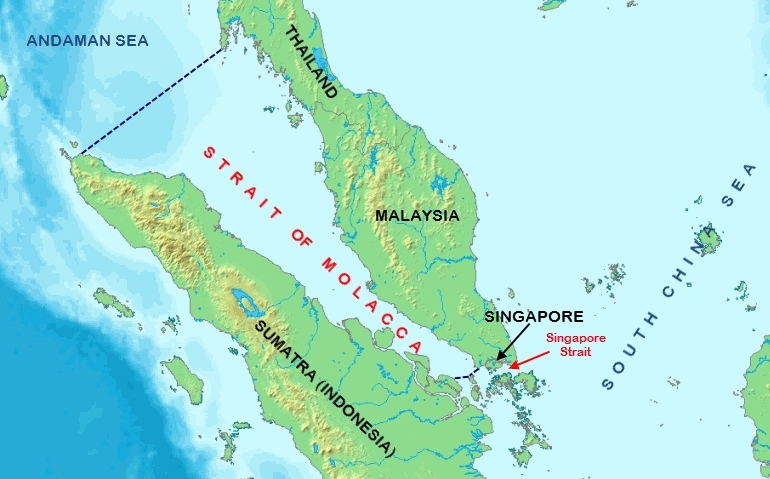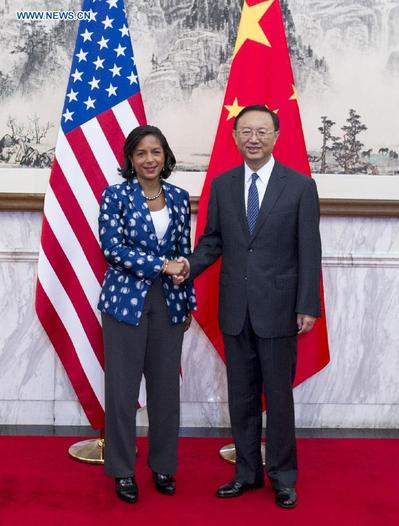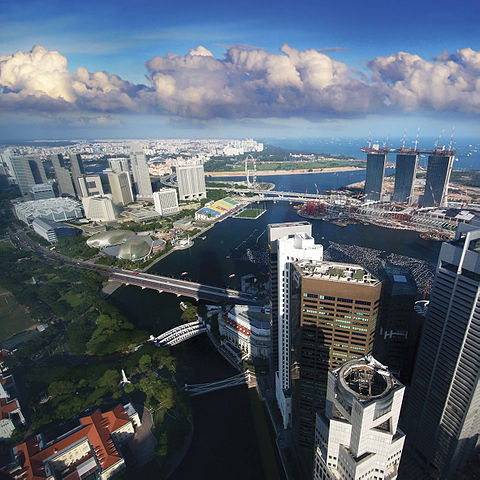 Singapore Skyline (Wikimedia)
Singapore Skyline (Wikimedia)
by David Parmer
In many ways Singapore can be considered an accidental country. It seems historical and geographical factors converged to create a unique state that started its life as a colonial possession and evolved to become a vibrant Asian democracy which has yet to reach its potential as a regional leader and model.
There is an old saying in the real estate business: “location, location, location.” Meaning location is the key to property value. And “location” is just one of Singapore’s selling points. Singapore is located at the tip of the Malay peninsula with the Strait of Malacca to its left and the South China Sea to its right. The country consists of 63 islands and has a land mass of 241 sq. mi (624 sq.km)
The Strait of Malacca is one of the busiest waterways in the world, which makes Singapore one of the five busiest ports in the world. And this facilitates another Singapore business; ship repair. Other sectors of the vibrant Singapore economy include:
- Financial services
- Oil drilling
- Rubber production
- Manufacturing
- Tourism
To staff these industries Singapore can call upon a population of around 5.5 million-40% of whom are non-citizens. Singaporeans speak English (30%) Mandarin Chinese (50%) and Malay (12%) Tamil (03%). Other dialects of Chinese are also spoken. English, however, is considered a primary language. Singapore has an extensive state-supported school system in which students score high in mathematics and science. There are also two local public universities that are highly ranked internationally.
Singapore’s British connection began with a treaty to establish a trading post signed by Sir Stamford Raffles and the Sultan of Johor in 1819. It became a Crown Colony in 1946, achieved full self government in 1959. It briefly joined the Federation of Malaysia in 1963, and, in 1965, became a parliamentary republic.
Present day Singapore is one of the five founding members of ASEAN, is a member of the Non-Aligned Movement, and is a member of the British Commonwealth of Nations.
In general Singapore has good relations with its neighbors, although there are border issues with Malaysia and an ongoing and severe pollution problem caused by slash-and-burn agriculture in neighboring Indonesia that blankets the city and often causes serious visibility problems in the hyper-busy Strait of Malacca.
Singapore has a capable military and mandatory national service (draft). The country had assistance from Israel’s IDF in setting up its military, and besides Israel it has military connections with Australia, France and the US.
Singapore, the accidental country, looks to have a bright future. The real question is can it continue to embrace its ethnic and linguistic diversity to forge a long term and unique Singapore identity that will let it play to its strengths in this century and beyond. So far, so good.
https://www.cia.gov/library/publications/the-world-factbook/geos/sn.html
http://en.wikipedia.org/wiki/Singapore#History
http://www.yoursingapore.com/meet-know-singapore.html

 日本語
日本語 English
English 中国語
中国語
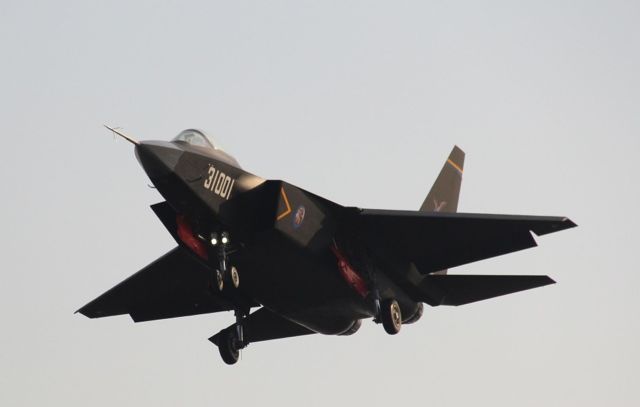
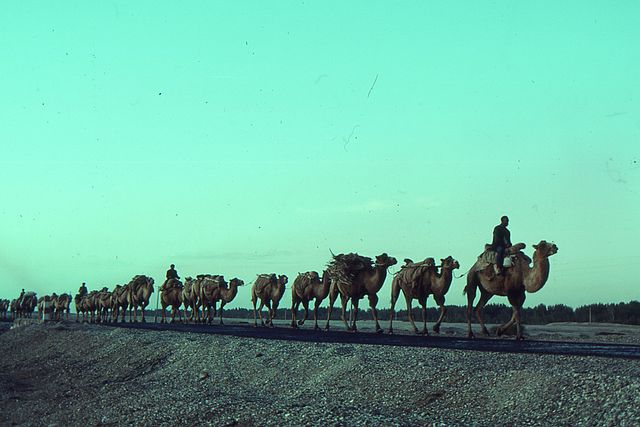 (Photo: Wikimedia)
(Photo: Wikimedia)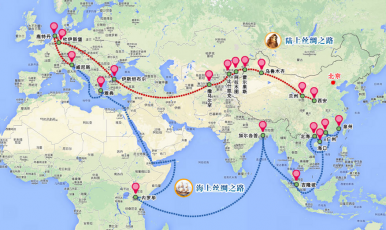 New Silk Road (Xinhua via Diplomat)
New Silk Road (Xinhua via Diplomat) Singapore Skyline (Wikimedia)
Singapore Skyline (Wikimedia)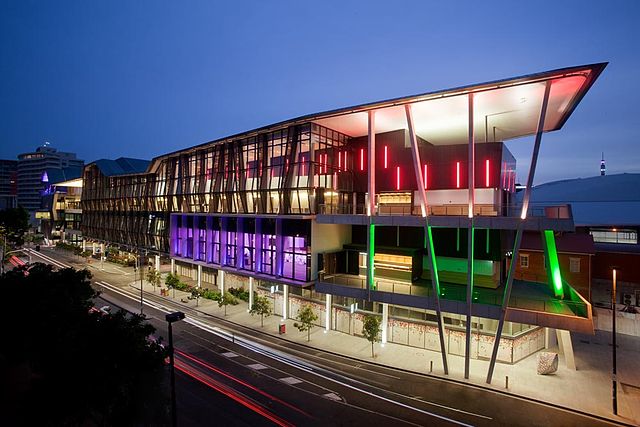 Brisbane Convention & Exhibition Centre (Wikimedia)
Brisbane Convention & Exhibition Centre (Wikimedia)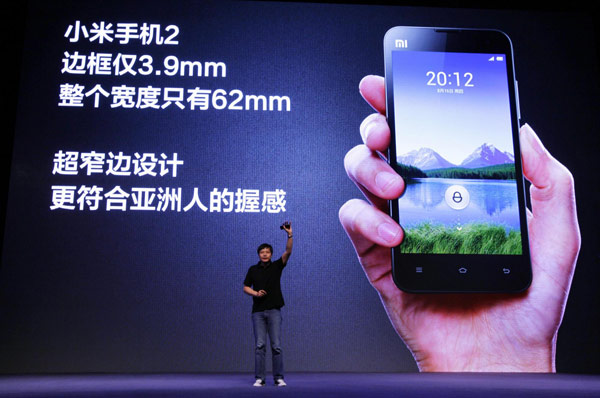
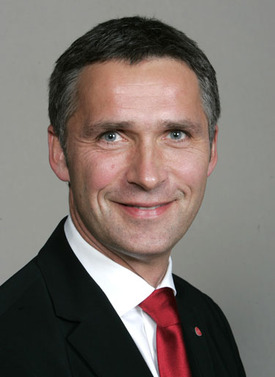
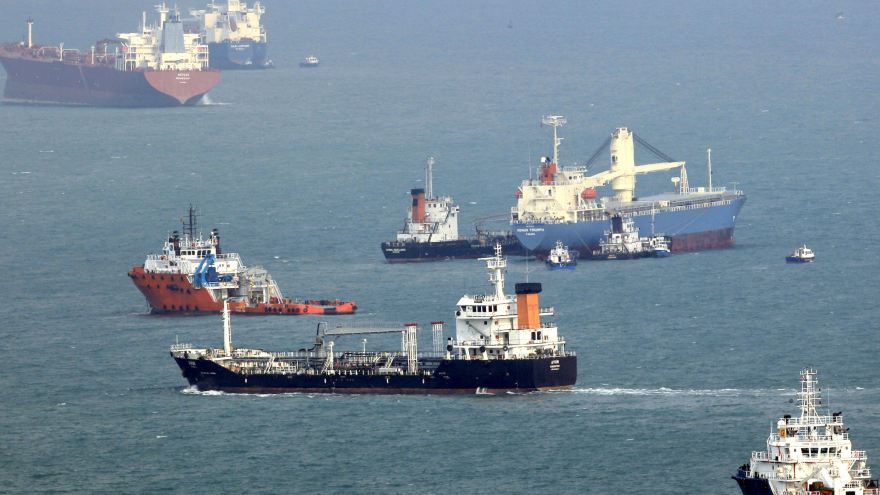 Strait of Mallaca (Photo: Maritime Trade Intelligence)
Strait of Mallaca (Photo: Maritime Trade Intelligence)